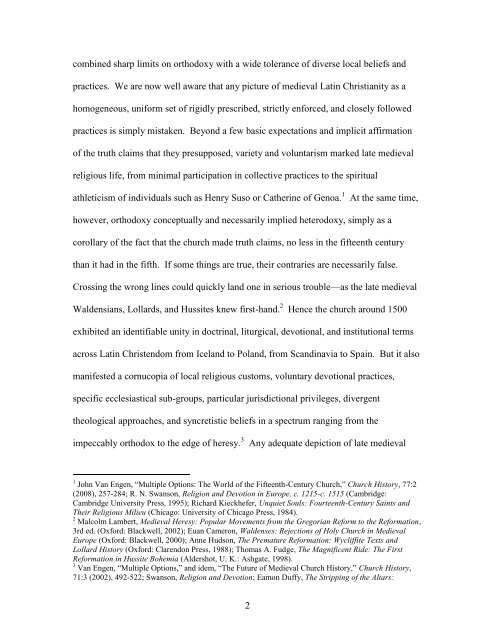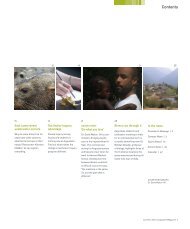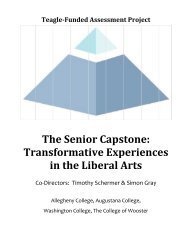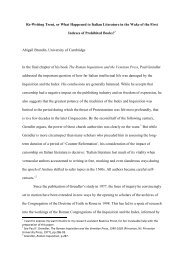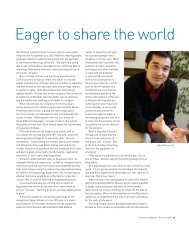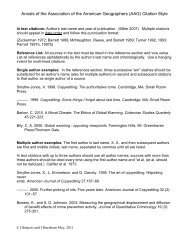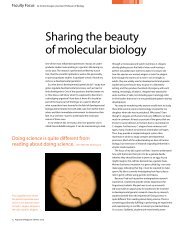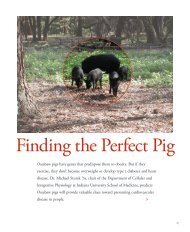Brad S. Gregory - Augustana College
Brad S. Gregory - Augustana College
Brad S. Gregory - Augustana College
Create successful ePaper yourself
Turn your PDF publications into a flip-book with our unique Google optimized e-Paper software.
combined sharp limits on orthodoxy with a wide tolerance of diverse local beliefs and<br />
practices. We are now well aware that any picture of medieval Latin Christianity as a<br />
homogeneous, uniform set of rigidly prescribed, strictly enforced, and closely followed<br />
practices is simply mistaken. Beyond a few basic expectations and implicit affirmation<br />
of the truth claims that they presupposed, variety and voluntarism marked late medieval<br />
religious life, from minimal participation in collective practices to the spiritual<br />
athleticism of individuals such as Henry Suso or Catherine of Genoa. 1 At the same time,<br />
however, orthodoxy conceptually and necessarily implied heterodoxy, simply as a<br />
corollary of the fact that the church made truth claims, no less in the fifteenth century<br />
than it had in the fifth. If some things are true, their contraries are necessarily false.<br />
Crossing the wrong lines could quickly land one in serious trouble—as the late medieval<br />
Waldensians, Lollards, and Hussites knew first-hand. 2 Hence the church around 1500<br />
exhibited an identifiable unity in doctrinal, liturgical, devotional, and institutional terms<br />
across Latin Christendom from Iceland to Poland, from Scandinavia to Spain. But it also<br />
manifested a cornucopia of local religious customs, voluntary devotional practices,<br />
specific ecclesiastical sub-groups, particular jurisdictional privileges, divergent<br />
theological approaches, and syncretistic beliefs in a spectrum ranging from the<br />
impeccably orthodox to the edge of heresy. 3 Any adequate depiction of late medieval<br />
1 John Van Engen, “Multiple Options: The World of the Fifteenth-Century Church,” Church History, 77:2<br />
(2008), 257-284; R. N. Swanson, Religion and Devotion in Europe, c. 1215-c. 1515 (Cambridge:<br />
Cambridge University Press, 1995); Richard Kieckhefer, Unquiet Souls: Fourteenth-Century Saints and<br />
Their Religious Milieu (Chicago: University of Chicago Press, 1984).<br />
2 Malcolm Lambert, Medieval Heresy: Popular Movements from the Gregorian Reform to the Reformation,<br />
3rd ed. (Oxford: Blackwell, 2002); Euan Cameron, Waldenses: Rejections of Holy Church in Medieval<br />
Europe (Oxford: Blackwell, 2000); Anne Hudson, The Premature Reformation: Wycliffite Texts and<br />
Lollard History (Oxford: Clarendon Press, 1988); Thomas A. Fudge, The Magnificent Ride: The First<br />
Reformation in Hussite Bohemia (Aldershot, U. K.: Ashgate, 1998).<br />
3 Van Engen, “Multiple Options,” and idem, “The Future of Medieval Church History,” Church History,<br />
71:3 (2002), 492-522; Swanson, Religion and Devotion; Eamon Duffy, The Stripping of the Altars:<br />
2


